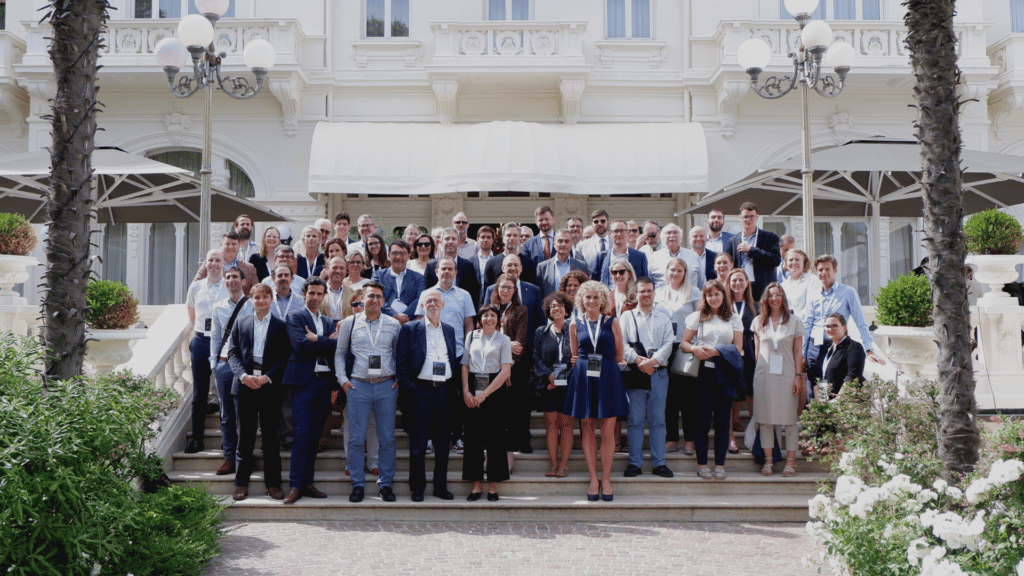”Learning by training”: reflections on recent training for ANACOM officials
Adopting a multi-disciplinary approach, this training solution, delivered for Portuguese regulator, ANACOM explored the main regulatory challenges raised by the adoption of the European Electronic Communications Code (EECC) as well as future challenges brought about by the digital economy.
Last Friday (22nd January) the FSR C&M team concluded a four-week training designed to meet the specific needs and requirements of ANACOM, the Portuguese telecom and postal regulator. The training, delivered entirely online, consisted of four modules including live classes, recorded video lectures, tutoring and group activities.
Adopting a multi-disciplinary approach (guaranteed by a blend of experts with economic, legal and engineering background), this training explored the main regulatory challenges raised by the adoption of the European Electronic Communications Code (EECC) as well as future, but not so distant, challenges brought about by the digital economy. The training was concluded with a moment of collective reflection about the future facing NRAs in the telecoms sector. Some of these reflections are presented below.
Regulatory reform: The previous overhaul of the telecom regulatory framework took place in 2009, and there is no doubt that the time for reform was ripe. The new Code was adopted in 2018 and had to be transposed into national laws by 21 December 2020. However, only a handful of countries have fully complied with this deadline: Denmark, Finland, Greece and Hungary (as well as the UK), while seven other Member States have either partially transposed the Code or have the laws transposing the Code queuing before their parliaments (Bulgaria, Czech Republic, France, Germany, Luxembourg, the Netherlands, and Portugal).
The expectations for the new Code have certainly been, and remain, high: it is supposed not only to reflect technological developments and changing consumer habits but also to foster investment in infrastructure and increase overall connectivity. Yet, the new Code does not seem to be revolutionary; it rather confirms the structure of telecom regulation as we have known it for the past 20 years. Still, regulatory equilibrium appears quite uncertain.
Contracting versus expanding frontiers of the telecom operators business: On the one hand, the traditional business of telecom operators, who are subject to NRA’s regulation and market oversight, is contracting; on the other as these operators provide networks and services essential for running the whole digital economy, in which the frontier of technology is constantly moving, they face new business opportunities. These two forces (contraction versus expansion) push operators in two different directions, which are not necessarily reflected in the expanding oversight of the NRAs.
Investment in VHCN as a new regulatory objective: Certainly, one of the main issues in the EECC is the introduction of investment as one of the regulatory objectives. It is worth taking a step back to recall that already the Digital Agenda has set targets for broadband, which have turned out to be insufficient. In that sense, the pursuit of investment in VHCN as one of the new regulatory objectives and its inclusion in the cornerstone piece of legislation – the EECC is quite telling and it will certainly have some implications. While NRAs have already been seeking to promote investment in VHCN (consider for example market analysis carried out in Markets 3A and 3B), understanding the best way to guarantee the most widespread deployment of VHCN possible is by no means simple, and neither is balancing such investment with technological neutrality.
Data-driven policy and regulation: In this increasingly complex ecosystem, in which telecom operators provide infrastructure that is essential for the digital economy, NRAs will have to step up in producing more data-driven regulation, which in turn will require them to invest in their ability to process more data. While EU initiatives, such as good practices and pledges on Business-to-Government (B2G) data sharing may help in the long-term, what is needed in the short- to medium-term is the understanding of how B2G data sharing works in the telecoms sector, where it is inefficient and how complementary data sharing not only in the B2G context, but also among different authorities could make regulation better.
The need for the digital regulator: The overarching question that emerges from the reform of the electronic communications sector and the debate that is taking place around the digital markets as well as the proposals for the Digital Services Act and the Digital Markets Act is whether we need a digital regulator that would provide a comprehensive oversight of digital markets. Opinions on this issue seem to be quite divided. Yet, there is another question that today remains unanswered: what should be the role of the NRAs in this new digital ecosystem? The Digital Markets Act seems to leave the NRAs out of the picture but considering their long track record in regulating markets with network effects, asymmetries of powers and intense overview of regulatory remedies, one may wonder whether they should be more directly involved. Otherwise, their expertise and potential to contribute to resolving the new challenges may remain untapped.
Competencies in consumer protection: When considering the role of the NRAs, the question is not just whether NRAs or NCAs or a completely new authority should have the powers to regulate the digital platforms, but also whether NRAs should have additional powers in the area of consumer protection. While in terms of the institutional design of public authorities there is no one-size-fits-all solution, we should carefully discuss whether the institutional design of NRAs and their interaction with other competent bodies should be further reinforced. If we want the digital ecosystem to work well to the benefit of all consumers, we cannot regulate separately telecom operators and digital platforms without understanding how these separate regulations will interact and without ensuring adequate dialogue between all competent authorities.







